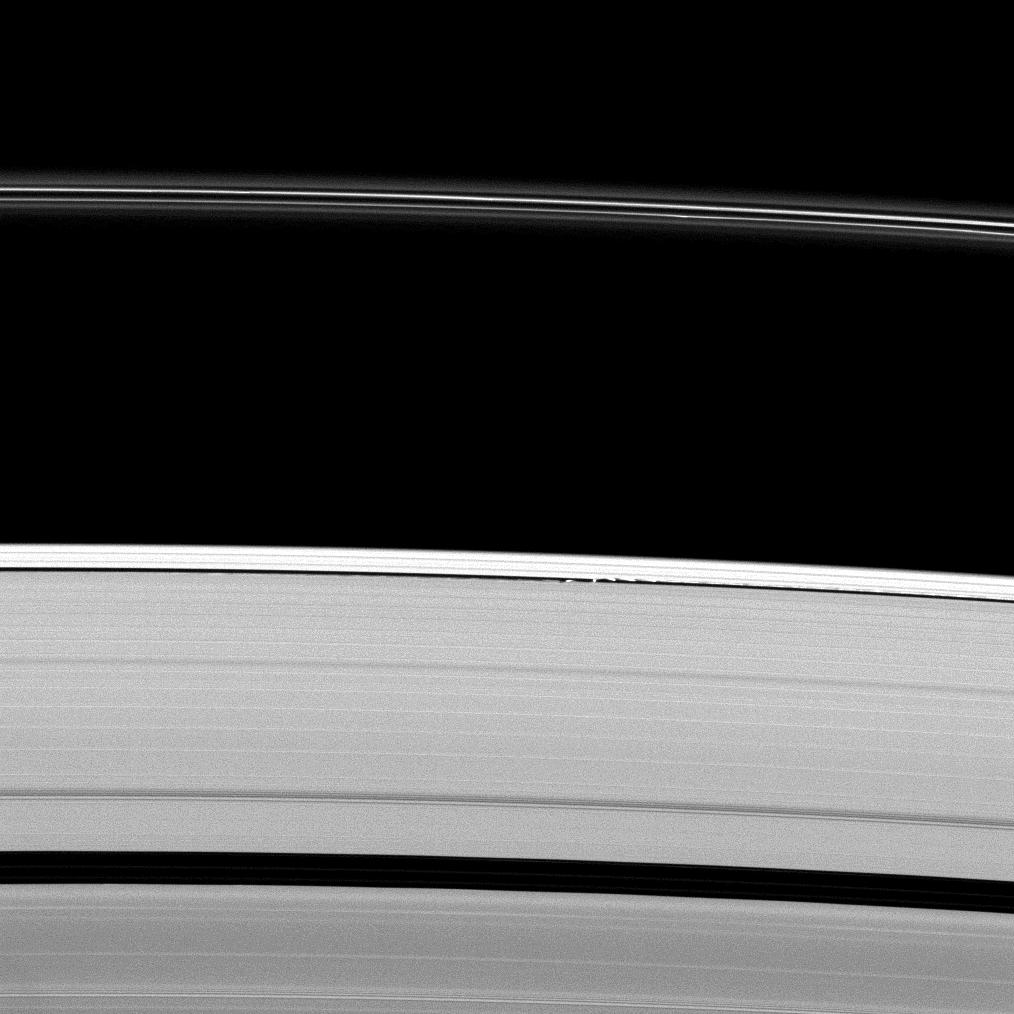Gravity-Induced Undulations

| PIA Number | PIA11504 |
|---|---|
| Language |
|
Saturn's moon Daphnis gives a scalloped look to the edge of the A ring as the moon orbits within the Keeler Gap.
Daphnis (8 kilometers, or 5 miles across) is the bright spot in the narrow gap near the center of the image. Since the gap is not much larger than the moon, the small moon's gravity is great enough to perturb the particles in the ring and create the wavelike patterns seen here. See Among the Waves to learn more.
This view looks toward the unilluminated side of the rings from about 61 degrees above the ringplane. The image was taken in visible light with the Cassini spacecraft narrow-angle camera on April 30, 2009. The view was acquired at a distance of approximately 1.5 million kilometers (932,000 miles) from Daphnis and at a Sun-Daphnis-spacecraft, or phase, angle of 73 degrees. Image scale is 9 kilometers (6 miles) per pixel.
The Cassini-Huygens mission is a cooperative project of NASA, the European Space Agency and the Italian Space Agency. The Jet Propulsion Laboratory, a division of the California Institute of Technology in Pasadena, manages the mission for NASA's Science Mission Directorate, Washington, D.C. The Cassini orbiter and its two onboard cameras were designed, developed and assembled at JPL. The imaging operations center is based at the Space Science Institute in Boulder, Colo.
For more information about the Cassini-Huygens mission visit http://saturn.jpl.nasa.gov . The Cassini imaging team homepage is at http://ciclops.org .
Credit: NASA/JPL/Space Science Institute
